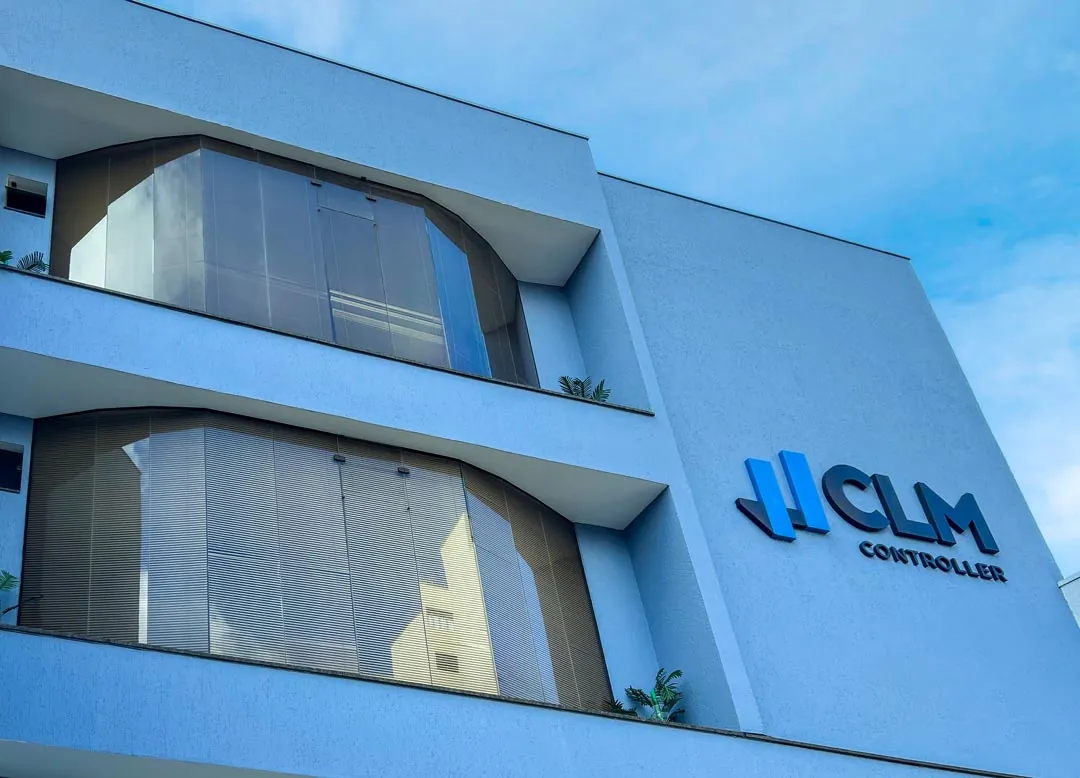Talk about Simples Nacional is to address one of the main tax regimes available in Brazil and its focus on micro and small companies.
Created with the aim of unifying and simplifying tax collection, the Simples Nacional has become a very popular option among entrepreneurs looking for less bureaucracy and, in many cases, the possibility of paying fewer taxes.
However, although it is widely known, you need to assess whether this system is really advantageous for your business profile, taking into account factors such as turnover, activity and growth planning.
In this article, we'll explore in depth what is Simples NacionalYou can find out how it works, who can sign up, what the limitations are and the advantages or disadvantages of choosing it.
We'll also cover the main taxes involved, the recent changes to this taxation model, as well as practical tips on how to register and pay Simples Nacional taxes.
If you want to understand this system better and find out whether it could be the best alternative for your company, read on.
What is Simples Nacional
O Simples Nacional is a simplified tax regime created by Complementary Law no. 123, of 2006.
The initial aim was to consolidate in a single guide (DAS - Documento de Arrecadação do Simples)This way, the majority of municipal, state and federal taxes are paid, reducing bureaucracy.
In addition, for qualified companies, it can result in lower tax rates than those that would be applied under Presumed Profit or Real Profit.
Under this regime, taxes such as IRPJ, CSLL, PIS, COFINS, INSS Patronal, ICMS, ISS and IPI are paid in a unified manner, respecting billing bands and annexes that define taxation according to the activity carried out.
In practice, Simples Nacional can make life easier for micro and small companies, which avoid having to deal with countless ancillary obligations and separate forms.
How Simples Nacional works
To understand how Simples Nacional worksIt is important to know that it has different annexes (I to V), each for a different type of activity (commerce, industry or services).
Each annex stipulates billing ranges and variable rates, starting at 4% (in Annex I, for commerce) and rising to more than 30% (in high ranges for some services).
As turnover over the last 12 months increases, the rate gradually rises.
Basically, the company must add up the value of its monthly sales (billing), apply the rate corresponding to its range and activity, and pay the DAS (Documento de Arrecadação do Simples), which consolidates several taxes into a single payment.
This system makes the routine easier for those who don't want to waste time with Brazil's complex tax legislation, although there are some details, such as the need to check whether the activity falls within the correct annex or is prohibited from Simples.
Who can register for Simples Nacional
As a rule, micro-enterprises (ME) and small companies (EPP) can register with Simples Nacional.
However, not all companies can choose the Simples Nacional. In practice, a number of conditions must be met:
- Annual turnoverThe current limit is up to R$ 4.8 million per year. If revenue exceeds this ceiling, the company will not be able to continue in the system and will have to migrate to Presumed Profit or Real Profit.
- Prohibited activitiesSome activities cannot join, such as financial institutions, credit cooperatives, some industries and other branches listed by law.
- Tax complianceThe company must not have any debts or registration irregularities. If it has any outstanding issues, it must clear them before entering the scheme.
Who can't opt for Simples Nacional?
Among the companies that, by law, cannot opt for Simples Nacional, we can highlight the following:
- Companies with other legal entities on their board;
- Companies with partners who own other companies whose combined turnover exceeds the limit of R$ 4.8 million;
- Corporations and financial institutions;
- Companies with partners abroad;
- Companies with activities not included in the Simples Nacional Annexes;
- Companies that have outstanding debts with the government;
- Companies that own stakes in other businesses;
- Companies with subsidiaries abroad.
What is the Simples Nacional limit?
There is great interest in understanding what is the Simples Nacional limit?This is a decisive criterion as to whether or not they remain in this system.
According to the current law, the annual turnover limit is R$ 4.8 millionThis amount, if exceeded, forces the company to opt out of Simples. This amount is calculated from the sum of all sales over the last 12 consecutive months.
Disadvantages of Simples Nacional
Although Simples Nacional While it's very popular and makes things easier, there are disadvantages that entrepreneurs need to consider:
Limited activities: Some industries, especially consultancies for self-employed professionals, may fall under high initial tax rate annexes (increasing the tax burden). In certain scenarios, Presumed Profit may be more advantageous.
Restricted growthWhen the company exceeds R$ 4.8 million in gross revenue, it has to leave Simples, which means more bureaucracy and new tax calculations.
No use of creditsIn the normal PIS/COFINS regime (non-cumulative), companies can take advantage of credits on inputs, which is not feasible in Simples. Depending on the cost profile, this can be detrimental.
Possibility of higher tax rates for certain servicesIt is important to calculate the Simples Nacional in each annex, as some activities start with rates above 15%, leading to a higher burden than if the company opted for the Simples Nacional. Presumed Profit.
Value of Simples Nacional
Talking about the "Simples Nacional value" actually requires understanding the different bands and rates. There is no single value, but rather progressive tables for each annex:
- Annex I: Trade, starting at 4% and going up to 19%.
- Annex II: Industry, starting from 4.5% to 30%.
- Annexes III, IV and VServices, ranging from 6% to over 30%.
This percentage is applied monthly to the turnover for the period, generating the DAS (Documento de Arrecadação do Simples).
Each month, the total sales are added up and the company's accumulated revenue is checked to determine the effective tax rate.
How to register for Simples Nacional
Companies already incorporated can opt for Simples Nacional until the last working day of January each year.
For companies just starting up, the deadline for requesting the option is 30 days from the last registration approval (municipal or state if required), provided that it has not passed the opening date listed in the CNPJ: 60 days.
When granted, the option takes effect from the date the CNPJ is opened. After this deadline, the option will only be possible in January of the following calendar year, taking effect from then on.
The registration process involves:
1. check that the activity is permitted: Check that the CNAE is not on the prohibited list.
2. settling any debtsThe company must not have any outstanding tax obligations in order to join.
3. access the Simples portalOn the Receita Federal website, there is an area for "Request to opt for Simples Nacional". Just enter the CNPJ and confirm the option.
4. wait for approvalThe system cross-checks the data to make sure there are no impediments. If everything is in order, membership is approved quickly.
Changes to Simples Nacional
From time to time changes to Simples Nacional. The law can change billing limits, rate rings and criteria for including or excluding activities.
Recently, there have been extensions to the ceiling and changes to the annexes, resulting in new rates and income brackets.
There have also been attempts to stagger the transition when turnover approaches the limit, but not all proposals are approved definitively.
It is essential to keep up with the news and have accounting advice to check whether the changes to Simples could affect your business positively or negatively, requiring planning and possible adaptations.
Taxes paid under the Simples Nacional regime
Under the Simples NacionalThe company pays the following taxes in a single form (DAS), depending on the nature of its activity:
- IRPJ (Corporate Income Tax)
- CSLL (Social Contribution on Net Profit)
- PIS (Social Integration Program)
- COFINS (Contribution to the Financing of Social Security)
- ICMS (Tax on the Circulation of Goods and Services, for commercial or industrial activities)
- ISS (Service Tax, for service provision activities)
- IPI (Tax on Industrialized Products, in some cases)
- CPP (Employer's Social Security Contribution, including part of the INSS)
The DAS tax rate unifies several taxes, simplifying and facilitating the process. business budget.
How to pay Simples Nacional taxes
To pay taxes monthly under Simples, the company must:
1. calculating the month's turnoverAdd up the sales and determine the tax rate, taking into account the accumulated revenue over the last 12 months.
2. generating the DASIn the Simples Nacional portal or integrated systems, enter the gross revenue figures and the platform automatically generates the DAS with the amount due.
3. making the paymentThe DAS can be paid via internet banking, lottery shops or ATMs on time (usually by the 20th of the following month).
4. monitoring changesIf turnover exceeds the stipulated bands, the rate tends to increase. And if it exceeds R$ 4.8 million, the company leaves the regime.
Simples Nacional rates and annexes
Find out about the annexes, billing ranges and rates of Simples Nacional:
Annex I - Trade
| Track | Revenue in 12 months | Rate | Amount to be deducted |
|---|---|---|---|
| 1ª | Up to 180,000.00 | 4.00% | - |
| 2ª | From 180,000.01 to 360,000.00 | 7,30% | R$ 5,940.00 |
| 3ª | From 360,000.01 to 720,000.00 | 9.50% | R$ 13,860.00 |
| 4ª | From 720,000.01 to 1,800,000.00 | 10.70% | R$ 22.500,00 |
| 5ª | From 1,800,000.01 to 3,600,000.00 | 14,30% | R$ 87.300,00 |
| 6ª | From 3,600,000.01 to 4,800,000.00 | 19.00% | R$ 378.000,00 |
Annex II - Industry
| Track | Revenue in 12 months | Rate | Amount to be deducted |
|---|---|---|---|
| 1ª | Up to 180,000.00 | 4.50% | - |
| 2ª | From 180,000.01 to 360,000.00 | 7.80% | R$ 5,940.00 |
| 3ª | From 360,000.01 to 720,000.00 | 10.00% | R$ 13,860.00 |
| 4ª | From 720,000.01 to 1,800,000.00 | 11,20% | R$ 22.500,00 |
| 5ª | From 1,800,000.01 to 3,600,000.00 | 14.70% | R$ 85.500,00 |
| 6ª | From 3,600,000.01 to 4,800,000.00 | 30.00% | R$ 720.000,00 |
Annex III - Services
| Track | Revenue in 12 months | Rate | Amount to be deducted |
|---|---|---|---|
| 1ª | Up to 180,000.00 | 6.00% | -- |
| 2ª | From 180,000.01 to 360,000.00 | 11,20% | R$ 9,360.00 |
| 3ª | From 360,000.01 to 720,000.00 | 13,20% | R$ 17,640.00 |
| 4ª | From 720,000.01 to 1,800,000.00 | 16.00% | R$ 35.640,00 |
| 5ª | From 1,800,000.01 to 3,600,000.00 | 21.00% | R$ 125.640,00 |
| 6ª | From 3,600,000.01 to 4,800,000.00 | 33.00% | R$ 648.000,00 |
Annex IV - Services
| Track | Revenue in 12 months | Rate | Amount to be deducted |
|---|---|---|---|
| 1ª | Up to 180,000.00 | 4.50% | - |
| 2ª | From 180,000.01 to 360,000.00 | 9.00% | R$ 8,100.00 |
| 3ª | From 360,000.01 to 720,000.00 | 10,20% | R$ 12,420.00 |
| 4ª | From 720,000.01 to 1,800,000.00 | 14.00% | R$ 39.780,00 |
| 5ª | From 1,800,000.01 to 3,600,000.00 | 22.00% | R$ 183.780,00 |
| 6ª | From 3,600,000.01 to 4,800,000.00 | 33.00% | R$ 828.000,00 |
Annex V - Services
| Track | Revenue in 12 months | Rate | Amount to be deducted |
|---|---|---|---|
| 1ª | Up to 180,000.00 | 15.50% | -- |
| 2ª | From 180,000.01 to 360,000.00 | 18.00% | R$ 4.500,00 |
| 3ª | From 360,000.01 to 720,000.00 | 19.50% | R$ 9.900,00 |
| 4ª | From 720,000.01 to 1,800,000.00 | 20.50% | R$ 17.100,00 |
| 5ª | From 1,800,000.01 to 3,600,000.00 | 23.00% | R$ 62.100,00 |
| 6ª | From 3,600,000.01 to 4,800,000.00 | 30.50% | R$ 540.000,00 |
How to calculate Simples Nacional
The calculation of Simples Nacional takes into account the information in the annexes presented in the previous topic and the following formula:
[(RBT12 x ALIQ) - PD] / RBT12
Based on this information, see the example below:
- Type of Annex: III
- Turnover in the last 12 months (RBT12): R$ 200.000,00
- Billing in the current month: R$ 20.000,00
- Simples Nacional rate: 11,20%
- Portion to be deducted (PD): R$ 9,360.00
See the calculation:
[(R$ 200,000.00 x 11.20%) - R$ 9,360.00] / R$ 200,000.00
(R$ 22.400,00 - R$ 9.360,00) / R$ 200.000,00
R$ 13.040/ R$ 200.000,00
Effective Rate: 6.52%
Finally, the effective rate is multiplied by the company's turnover for the month in question to arrive at the amount that will need to be paid to the tax authorities.
What is the Simples Nacional R Factor?
One topic that often raises questions for those opting for the Simples Nacional is the so-called R Factor.
In practice, it is an indicator used to determine, specifically in the case of companies providing services, whether taxation will be levied by the Annex III or Annex V of the Simples legislation.
The R Factor is calculated using the ratio between the payroll (expenses for salaries, pro-labour and labour charges) and the gross turnover for the last 12 months.
- If this result is equal to or greater than 28%the company falls under the Annex IIIwhich has lower initial tax rates (starting at 6%).
- If the value remains below 28%the company falls into the Annex VThe rates are higher (from 15.5%).
This mechanism was created to encourage service companies to maintain or increase their formal payroll, since by having a higher ratio between salaries and revenue, the R Factor favors a more economical framework.
In short, the R Factor serves as a thermometer of personnel expenses in relation to sales. For many service businesses, this rule is decisive when it comes to checking whether Simples really offers a tax advantage or whether another regime might be more appropriate.
Therefore, when carrying out tax planning, it is essential not only to calculate the R Factor, but also to project possible variations in payroll and turnover throughout the year, to ensure that the company operates under the best cost and competitiveness conditions.
How the Simples Nacional installment plan works
A relevant point for companies facing difficulties in paying their taxes on time is the possibility of paying in installments debts relating to the Simples Nacional.
O Simple National installments allows companies to settle their tax debts in stages, reducing immediate financial pressure and avoiding exclusion from the system due to default.
Understanding how this feature works is essential to keeping your company in compliance and preserving benefits, such as the unification of taxes in a single form (DAS).
1) Who can pay Simples Nacional debts in installments?
Any Microenterprise (ME) or Small Business (EPP) opting for Simples Nacional that has tax debts calculated under this regime can apply for installment payment.
However, it is important to check beforehand if there are any restrictions such as debts that have already been filed or debts relating to periods when the company was not in Simples.
2. Procedure for requesting installment payments:
The request for Simple National installments is done online, through e-CAC (Virtual Service Center) portal.
There, taxpayers can check the "Simples Nacional Installment Plan" option and then choose which debts will be included. The system calculates the down payment and monthly installments, indicating deadlines and interest.
3 General conditions for installment payments:
- The minimum amount of the installments is R$ 300.00 and the number of installments is set automatically by the system.
- In turn, the debt can be paid in a maximum of 60 equal installments.
- The debt is adjusted for interest based on the Selic rate and, in some cases, a late payment fine, even if the taxpayer has regularized the situation.
It is worth noting that once the installment plan has been approved, the taxpayer must pay the installments on time.
In the event of default on a given installment, the installment agreement may be terminated by the Receita Federal.
In this scenario, the debt is once again considered outstanding, with late payment increases and the risk of exclusion from Simples Nacional, as well as other tax sanctions.
What can cause a company to be excluded from Simples Nacional?
Even though it is an attractive tax regime, the Simples Nacional imposes a series of requirements for the company to remain in the system.
Failure to comply with these obligations or exceeding certain limits can result in exclusion from Simples, forcing the business to migrate to another regime (Presumed Profit or Real Profit).
Here are the main causes of exclusion:
1. exceeding the billing limit: Current legislation establishes that the annual turnover ceiling for Simples companies is R$ 4.8 million.
If the company exceeds this amount over the course of a year, it loses the right to remain in the scheme.
2. engaging in prohibited activities: Not all activities are allowed under Simples. If the company adds a new CNAE that is not compatible with the scheme, will be disqualified.
It is worth remembering that the legislation has a list of branches of activity that are not eligible for Simples Nacional.
3. having partners with shares in other companies: If one of the partners has a significant stake in another company of a larger size, or if this creates a conflict with the framework rules (for example, exceeding consolidated turnover limits), exclusion may occur.
4. late or non-payment of taxes: Simples Nacional companies also have to pay the DAS monthly. If they accumulate debts on an ongoing basis and do not negotiate installments, the IRS may exclude the company from the system.
5.Failure to comply with legal registration requirements: Changes of address without proper updating, and registration irregularities can lead to notices which, if not resolved, result in tax errors and exclusion from the scheme.
6. not complying with ancillary obligations: Although simplified, Simples Nacional requires the submission of declarations, such as DEFIS (Socioeconomic and Tax Information Declaration), as well as the proper issuance of invoices.
Therefore, if for any reason the company neglects these obligations, it runs the risk of being disqualified.
There's no doubt about it, keeping an eye on the rules of permanence is essential if you want to take advantage of the scheme's benefits.
That's why regular accounting follow-up is essential to monitor turnover, keep obligations up to date and ensure stability in the business. Simples Nacional.
Conclusion: Can Simples Nacional be the best choice?
Simples Nacional is a very popular choice due to the reduction in bureaucracy and the possibility of potentially lower tax rates, but it is not a universal solution.
Entrepreneurs should carefully evaluate their projected turnover, the type of activity, the profit margin and the alternative regimes (Presumed Profit, Real Profit) to decide which one to fall into.
Simples will not always result in lower taxes, especially for service sectors that may have high initial tax rates or for those seeking to take advantage of PIS and COFINS credits, something not covered by Simples.
Regardless of whether a company opts for Simples, it is essential to maintain accounting compliance, monitor legal changes and plan for growth.
Those who exceed certain turnover limits or carry out prohibited activities must consider another regime, otherwise they may incur irregularities or tax incorrectly, creating risks to business continuity.
If you need help evaluating the advantages and disadvantages of Simples or understanding how to pay less tax, get to know the services of CLM Controller Accounting.
Our team of professionals is ready to offer personalized support, allowing your company to enjoy efficient tax management, paying taxes fairly, economically and within the law.



